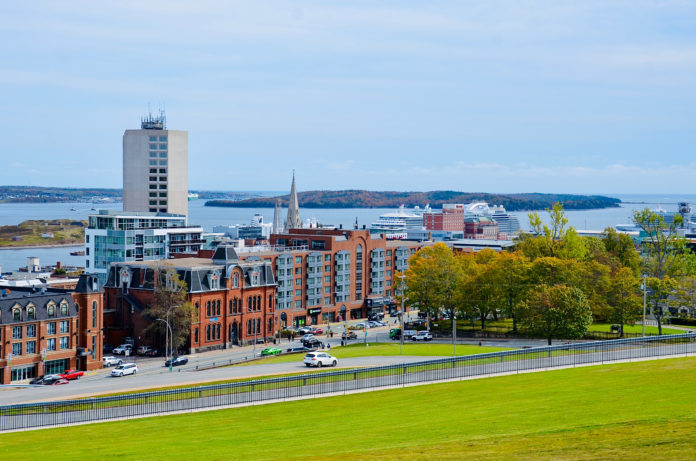
Nova Scotia’s economic recovery from last year’s double whammy of Northern Pulp’s closure and the downturn in retail and tourism due to COVID-19 will be centred around population growth fuelled primarily by immigration.
“Nova Scotia’s recovery should be helped by improved population growth, which in turn will benefit from higher federal immigration targets and the decision to make the Atlantic Immigration Pilot program permanent,” noted TD Economics in their annual economic forecast.
“Population growth has been central to the province’s improved economic performance in recent years and has even held up relatively well thus far.”
Read More
Nova Scotia Wants French-Speakers: Province Targets Francophones in New Immigration Draw
Nova Scotia Conducts Entrepreneur Draw, Invites 43 Candidates
Nova Scotia Immigration Draw: Invites Issued To Financial Officers Under NOC 1114
Among the largely-spared Atlantic Canadian provinces, Nova Scotia was the most affected during the first wave of the global pandemic. Then, the Atlantic Canadian Bubble, an agreement between the provinces of Nova Scotia, Prince Edward Island, New Brunswick and Newfoundland and Labrador to allow the free movement of travellers within the region, burst.
As a result, Nova Scotia’s tourism sector saw an end to the small benefit it had provided to hoteliers and restaurants in the province.
Nova Scotia Economy To Grow 4.2% This Year, 2.4% In 2022
In their somewhat ominously titled provincial economic forecast, It’s Always Darkest Before Dawn, the bank’s chief economist Beata Caranci, deputy chief economist Derek Burleton, and economists Rishi Sondhi and Omar Abdelrahman predict the Nova Scotia economy will grow by 4.2 per cent this year and 2.4 per cent in 2022.
That is lower than the forecasted average economic growth of 4.9 per cent for this year and 3.8 per cent in 2022 for Canada.
The slower rate of growth for Nova Scotia this year is at least partly due to the relatively small drop in its GDP during the pandemic last year. While Alberta’s economy took a hit of 7.3 per cent of its GDP, Ontario and Newfoundland and Labrador of 6.2 per cent, and Saskatchewan of 5.6 per cent, Nova Scotia’s losses during 2020 amounted to only 4.3 per cent of its GDP.
As the Maritime province on Canada’s east coast approaches the end of the second wave of the pandemic, its exports are expected to get a shot in the arm from the 8.4-per cent growth being forecast for China, a return to a more robust hospitality sector, and significant investment in major projects, including the decommissioning of offshore oil projects.
A return to more normal levels of immigration, which would drive population growth, is considered to be essential for Nova Scotia’s economic recovery.
As the global pandemic and the border restrictions imposed to slow the spread of COVID-19 crippled economies throughout the world, they also slowed immigration to Nova Scotia.
Business Immigration Programs In Nova Scotia Largely Spared During Pandemic
Immigration, Refugees and Citizenship Canada’s figures for last year show 53.8 per cent fewer foreign nationals became new permanent Canadian citizens in Nova Scotia last year, only 4,075, compared to 7,580 in 2019.
Despite that drop in immigration to Nova Scotia, the province’s business immigration programs, including the Start-Up Business class and the Federal Self-Employed Class, held steady.
Last year, 20 new permanent residents settled in Nova Scotia under these programs, the same number as the previous year.
Family Sponsorship programs resulted in 390 fewer new permanent residents to Nova Scotia in 2020, a drop of 44.3 per cent from the 880 who had come to the province under those programs in 2019.
Economic immigration took a big hit during the pandemic last year, dropping 53.5 per cent, to 1,090 new permanent residents from 2,345 the previous year, as those able to come to Nova Scotia the Provincial Nominee Program fell off.
Ottawa remains firmly committed to boosting immigration again with much more ambitious targets for this year and the next two.
Immigration Minister Marco Mendicino announced late last year that Canada was going to greatly increase immigration levels to make up for the shortfall in 2020 due to the COVID-19 pandemic.
Ottawa Bullish On Immigration
Under the new plan, Canada is planning to welcome more than 1.2 million newcomers between 2021 and 2023 with 401,000 new permanent residents to Canada in 2021, 411,000 in 2022 and 421,000 in 2023.
Prior to the coronavirus pandemic, the previous plan set targets of 351,000 in 2021 and 361,000 in 2022.

